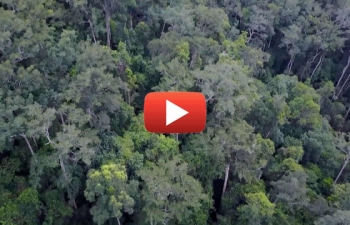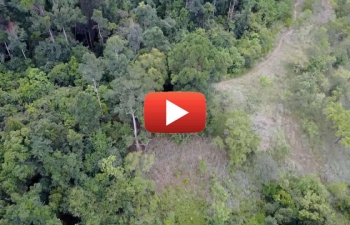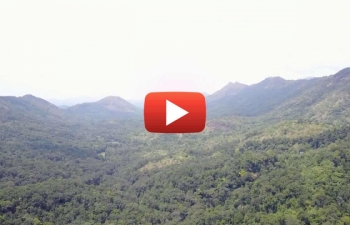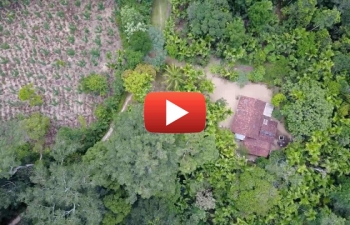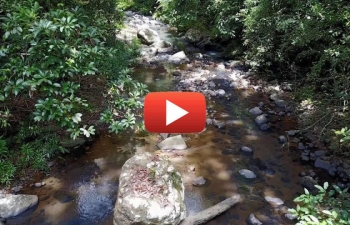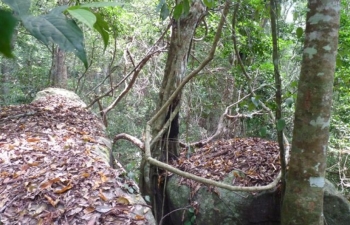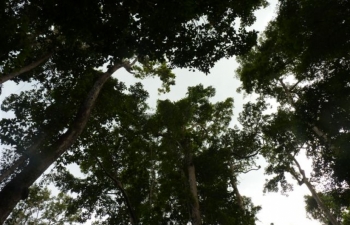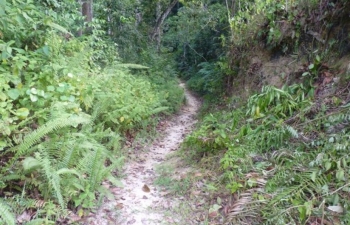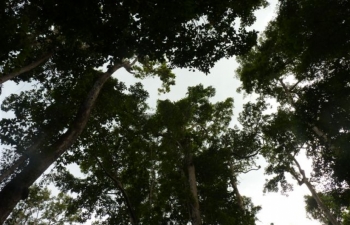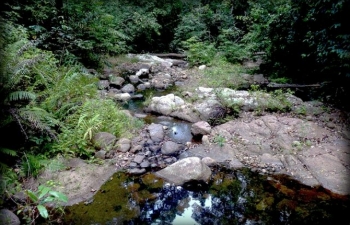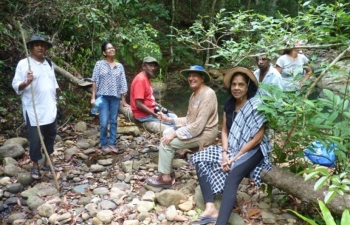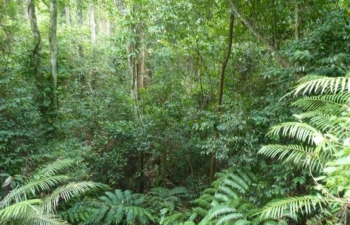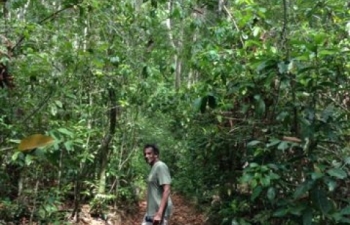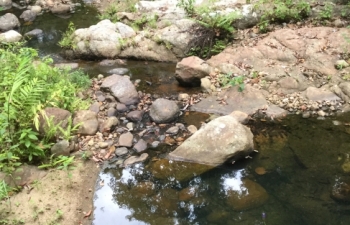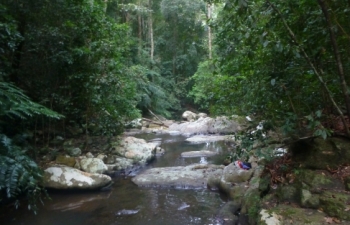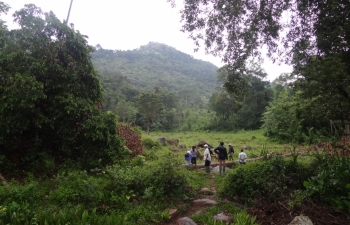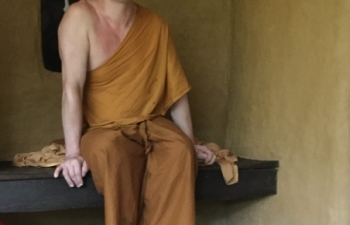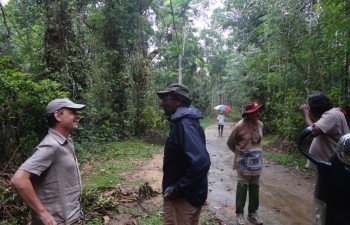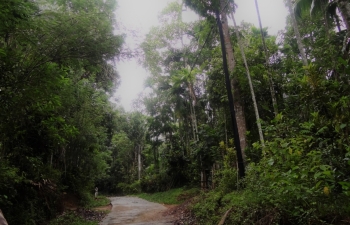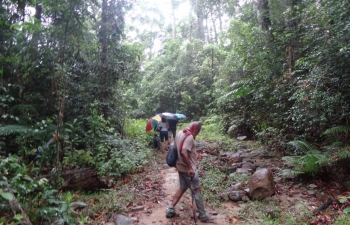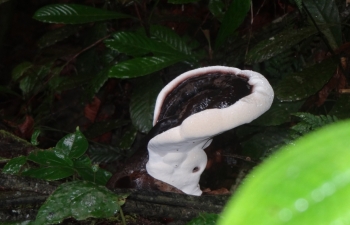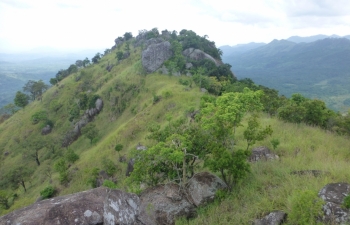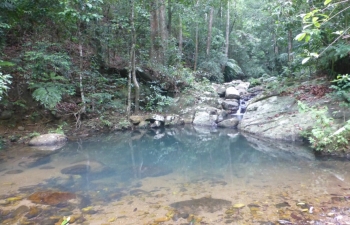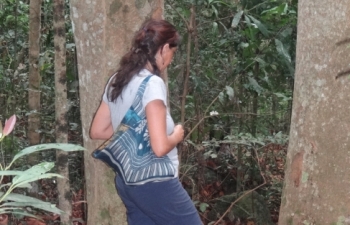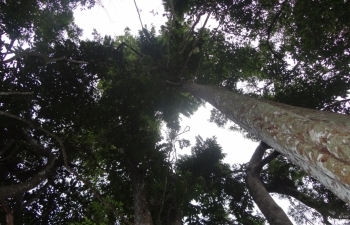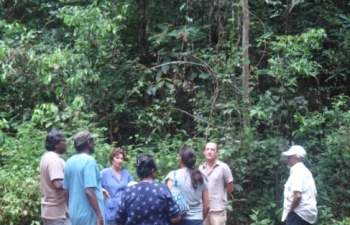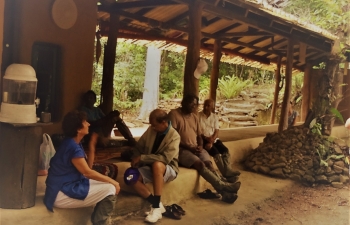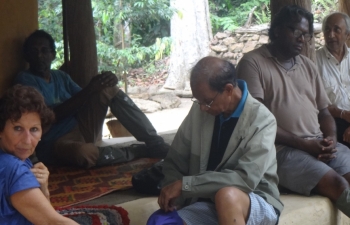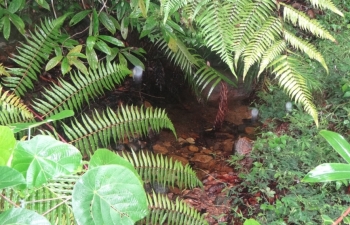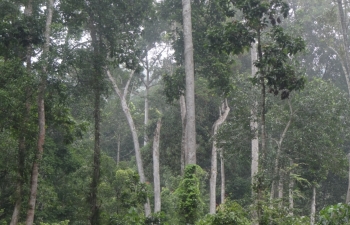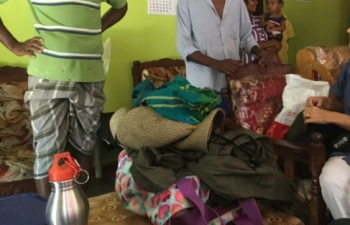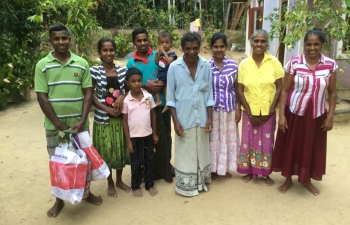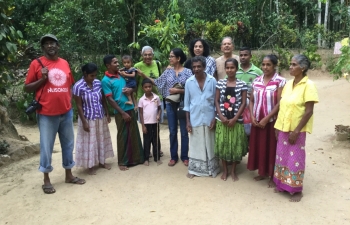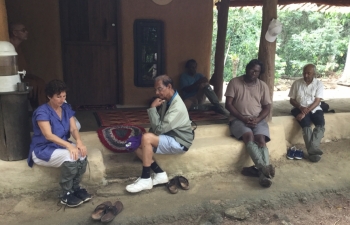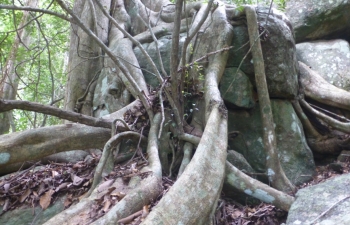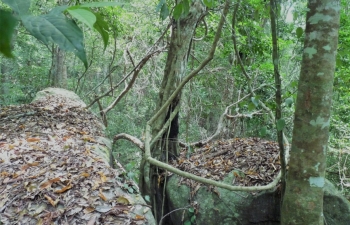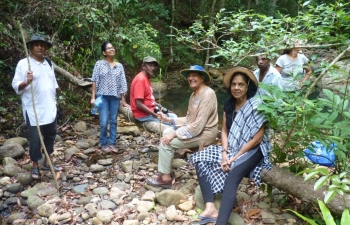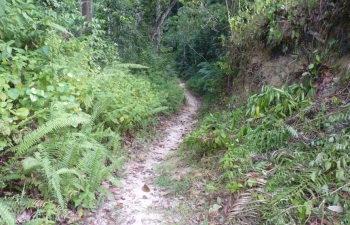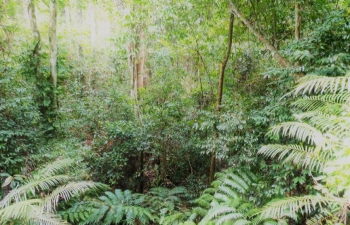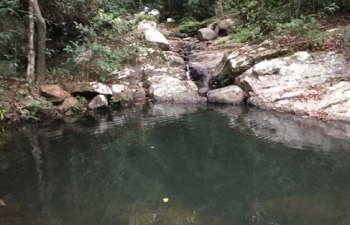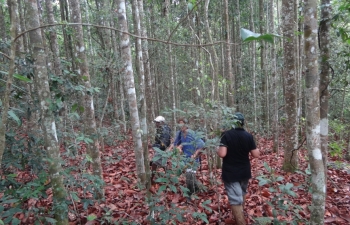Projects
The Rainforest Trust is seeking to purchase, or have secured easements for the remnant forest patches threatened or made available for sale and ensure its protection into the future.
The current holdings include forest patches in:
- Hiniduma
- Baddegama
- Embelegedera
- UdaKiruwa
The first three holdings are in the Galle District. The last that is UdaKiruwa is in the Badulla District.
Holdings in the Galle District
The Trust has 3 properties in the Galle District in 3 separate geographic locations managed as forests. These properties are;
Baddegama
The extent of property is 9 acres and a good part of the 9 acres is a regenerated forest which, was enriched according to analog forestry practices, by the RRI. All plants used in the reforestation were endemic, native and indigenous to the area to maintain the natural flora of the area. Such endemic species as Na, Hora, Attamba, Hal, Milla as well as Pelan, Dun, Moonamal, Mandora, Mee kithul can be observed here. These forest species are intermixed with such fruit trees as Mango, Aricanut and Rose Apple.
To make the property financially sustainable the Trust has a program to develop the land as an educational hub for local schools as well as a tourist destination for those interested in nature and tropical forests. This endeavour will include the construction of cabanas for stay-overs and designated as “Room on the Project”.
Hiniduma
The extent of the Hiniduma property is around eight acres. Previously, this land was an abandoned plantation which was acquired by the Trust in 2006 and is now a regenerated forest. The environs of the forest are very picturesque, with the Gin Ganga flowing by the side of one of its borders. At present there is an “enrichment program” at Hiniduma with forest trees cultivated. Many of the tress that are grown are endemic, native and indigenous in the Southwestern wet zone of the island.
Embalagedera
Embalagedera is located close to Neluwa town towards the border of the Sinharajah forest. Comprising of 11 acres, it was acquired by the Trust in 1991 and prior to that it was an abandoned tea plantation. It is now a fully regenerated forest. The terrain of the property is mountainous, and the surrounding forested hills provide a pleasing landscape of scenic beauty. The property is frequently visited by endemic wildlife such as the Toque Macaque, many species of birds, amphibians, butterflies and mammals such as the Giant Squirrel and the Grey Langur. Due to strict agricultural practices in the area forests are frequently fragmented leaving pockets of isolated patches where many animals remain trapped. Embalagedara acts as safe heaven to such species allowing them to roam free.
Livelihood Support
The plots of forests provide some livelihood support to villages in the vicinity who reap the benefits of forest produce in an eco-friendly manner. Such products include kitul treacle, mushrooms, bee’s honey, and various herbs to mention a few.
Indigenous Wildlife
Patches of forests such as these provide an important support in promoting species conservation, at a time when forest cover is diminishing at an alarming rate. The forest patches provide a refuge for the survival of native species when their natural habitats and entire ecosystems are fast diminishing.
As an attempt to attract endangered and threatened species of fauna to each site efforts were made to made to create artificial habitats for several selected target species. These included amphibians and butterflies, two groups considered indicators of healthy environments.
Aquatic habitats were designed adjoining natural streams and rivers in Hiniduma focusing on rocky, flowing and pool habitats to attract and establish many threatened species of frogs. The success of this project was observed during the many monitoring visits where several endemic species as, the Kelaati dwarf frog Adenomus Kkelaatii and the corrugated water frog Lankanectes corrugatus were observed as well as the hourglass frog Polypedates Cruciger, Rana aurantiaca and Rana Temporalis.
In addition, an increased diversity of butterflies and dragonflies have been observed in the forest. Among reptiles the endemic, Sri Lanka Cat Snake (Boiga Ceylonensis) and small mammals as the Jungle Mouse have been observed.
Recent Forest Acquisitions
- In the Galle District ownership of 4 acres of land in Pilagoda Baddegama held in trust was transferred to the Rainforest Trust of Sri Lanka in May 24. The land which as funded by a grant from Quest International BV has transformed into a secondary rainforest with minimum intervention from its original status of an abandoned tea land in 2004.
- In Udakiruwa an addition to our forest land was made in November 2023 by purchasing 5 acres privately owned forest land using Trust’s reserves.
UdaKiruwa - The Current Focus
While the holdings in the Galle District are well established and run as sustainable units, special mention need to be made of UdaKiruwa as it is the current focus of the Trust.
It is a unique and a little known rainforest. The Trust is in the process of acquisition of parcels of rainforest land in UdaKiruwa privately owned by villagers which had been under threat from logging. The forest site is in the UduKiruwa GS area which is near Lunugala in the Badulla District and coming under the Uva Province. UduKiruwa is an eco-system that had been very isolated and had never been studied until very recently. The area is a part of the Menik Ganga river basis in the mid-country intermediate zone. Its landscape is picturesque, heavily wooded, with a backdrop of rolling hills. A very recent study of the UdaKiruwa forest by a multi-disciplinary study team reported that the forest has a rich and a unique bio-diversity.
UduKirawa is said to be the last remaining natural rainforest left in the mountains of the Uva Province. Elsewhere the forest have been cut down and converted to tea and rubber plantations. UdaKiruwa is therefore a reminder of how this province looked like before the advent of the plantation industry. Located at an at an altitude of around 500 M, it is also the home to variety of animal species, including sambar, deer, wild boar, fishing cat, a solitary elephant and many species of birds including the black eagle.
The Beauty of UdaKiruwa has been captured in in a drone video footage and can be viewed by visiting our photo gallery.
The Story of UdaKiruwa
UdaKiruwa rainforest is a unique patch of rainforest isolated from other rainforests of the South by a geological event. The Ratnapura phase of the Pleistocene saw a very wet Sri Lanka with Great Lakes and rainforests that encircled the central mountains. It was followed by a dry period that dried all the natural lakes and the rainforests retreated to the wetter south west quarter of the Island. The retreating forests left refugial fragments in deep sheltered valleys, but these too disappeared during the phase of the plantation establishment
The Trust’s attention to UdaKiruwa was first drawn around the year 2015, by Ajahn Medhino, a venerable Buddhist monk who built a forest hermitage in UdaKiruwa and spent a number of years in that village. When the time came to return to his native country in Europe, he brought to our attention this unique eco-system and the imminent threat it was facing from commercial logging. That was the start of our initiative to save UdaKiruwa from destruction. The venerable monk on return to UdaKiruwa recently expressed his joy and happiness that a small part of the country worth preserving had indeed been preserved.
Our Vision and Strategy for Udakiruwa
The Trust has successfully negotiated with the villagers to purchase parcels of forest land adding to a total of around 25 acres. Some of the land, around 10 acres have already been acquired with private funds of Trust members and donations. The Trust has a vision and a strategy to acquire all available plots and to manage these lands as forests, and preserve its bio-diversity for the future. The land will be overseen by the Trust’s existing field staff and technical personnel through regular visits, and with the support of local community leaders. To make the project sustainable the Trust has plans to improve the infrastructure of the location, build cabanas for short stays especially for those contributing to the land purchase, and for letting to other nature lovers, researchers and students. The Trust also has in mind, partnering with local communities by supporting sustainable livelihoods with incomes earned from local crafts and forest produce and finally helping with the marketing of these products. Once the infrastructure and the organization is in place the Trust will strive to make the project self- supporting as a bio-diversity hotspot.


GIS Map of Uda Kiruwa location and how to get there

